Broken Bones From a Car Accident in Ontario, Canada
Compensation for Broken Bones From a Car Accident in Ontario, Canada
Car accidents in Ontario can result in a variety of injuries, and one of the most common is broken bones. The impact of a collision can cause significant trauma to the body, resulting in fractures of varying degrees.
In this web page, we will explore the different types of fractures that can result from car accidents in Ontario and the facts you need to know about broken bones. We will also discuss the most common broken bones that occur after a car accident and how much compensation you can receive for a broken leg in a car accident in Ontario.
Additionally, we will examine how you can file a claim for broken bones resulting from a car crash in Ontario and how much a fractured bone injury case may be worth. Finally, we will address the process of claiming for a car accident injury in Ontario and what steps you should take to ensure you receive the compensation you deserve.
Let’s dive in!
- Most Common Bones Broken in Car Accidents in Ontario?
- Broke Bones & Types of Fractures From Car Accidents in Ontario?
- Coping with Broken Bones After a Car Accident in Ontario?
- Average Settlement for Broken Wrists in a Car Accident in Ontario?
- How Do I Make a Claim for Broken Bones in Car Accident in Ontario?

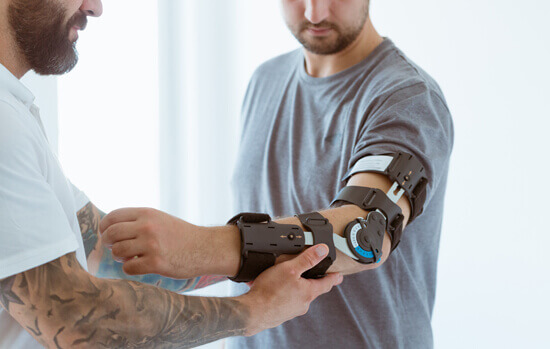
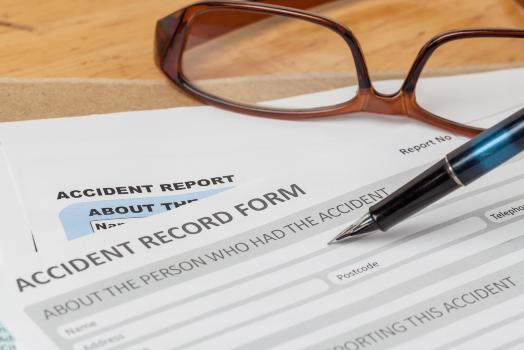
Broken Bones Car Accident in Ontario, Canada
Most Common Bones Broken in Car Accidents in Ontario, Canada
The bustling province of Canada, Ontario, is no stranger to the hustle and bustle of daily life. With a high population density and millions of drivers on the road daily, it’s no surprise that car accidents are unfortunate. When it comes to serious car accidents, a long list of injuries can occur.
The aftermath of these accidents can be as varied as the collisions themselves. Still, one common thread that often ties them together is the occurrence of broken bones.
We will explore the most common broken bones in car accidents in Ontario and how to avoid or minimize the impact of these injuries.
Clavicle: The Collarbone Catastrophe
The clavicle, or collarbone, is one of the most frequently broken bones in car accidents in Ontario. This S-shaped bone connects the sternum (breastbone) to the scapula (shoulder blade) and serves as a support strut for the shoulder. The clavicle’s prominence and vulnerability to direct impact make it susceptible to fractures during collisions. A broken collarbone can result in severe pain, limited arm movement, and potential nerve or blood vessel damage.
Arms (including the wrist, hand, and fingers)
Arms are often injured in car accidents as occupants instinctively extend their arms to brace for impact or to shield themselves.
Common arm injuries include:
- Wrist Fractures: Sudden impact can cause the bones in the wrist to break, leading to pain, swelling, and limited movement.
- Hand Fractures: Fingers and hand bones can be broken from the force of the collision or by being crushed between objects.
- Forearm Fractures: The radius and ulna bones in the forearm may break due to direct impact or excessive twisting forces.
Legs (including the ankle, foot, and toes)
Leg injuries are also common in car accidents, especially in high-speed collisions or when the vehicle’s front end is crushed.
Injuries to the lower extremities can include:
- Ankle fractures: The force of the crash can cause the bones in the ankle joint to break, leading to pain, swelling, and difficulty walking.
- Foot fractures: Impact or crushing forces can damage the numerous bones in the foot, including metatarsals and phalanges.
- Tibia and fibula fractures: The bones in the lower leg can be fractured due to direct impact, such as when the leg is pinned between objects.
Spine
Spinal injuries are among the most serious and potentially life-altering consequences of car accidents. The force of the impact can cause compression or dislocation fractures, which may damage the spinal cord and result in paralysis.
Common spinal injuries include:
- Cervical spine fractures: Injuries to the neck can lead to severe pain, limited mobility, and even paralysis.
- Thoracic spine fractures: The middle portion of the spine can be injured in high-impact collisions, causing pain and potential nerve damage.
- Lumbar spine fractures: Lower back injuries are common in rear-end collisions and can cause significant pain and mobility issues.
Skull and facial bones
Head and facial injuries are common in car accidents, particularly when occupants are not wearing seatbelts or when airbags fail to deploy. These injuries can be severe and require extensive treatment.
Common skull and facial bone injuries include:
- Skull fractures: A forceful impact can cause the skull to break, potentially leading to brain injuries and other complications.
- Facial fractures: The bones of the face, including the jaw, cheekbones, and eye sockets, can be fractured by the force of the collision or by striking objects inside the vehicle.
- Nasal fractures: The nose is particularly vulnerable to injury due to its prominence, and fractures can cause pain, swelling, and breathing difficulties.
Ribs: The Fragile Framework
Ribs are another common casualty of car accidents. These curved bones protect vital organs like the heart and lungs while providing structural support to the chest cavity. In a collision, the impact forces can cause ribs to fracture or even break completely. In severe cases, this can lead to difficulty breathing, internal organ damage, and even punctured lungs.
Radius & Ulna: The Forearm Fiasco
The radius and ulna are the two long bones of the forearm. They are often fractured in car accidents, typically due to passengers bracing themselves against the dashboard or steering wheel. These fractures can cause immense pain and may require surgery, casts, or splints to stabilize the bones for proper healing.
Femur: The Thigh Bone Breakdown
The femur, or thigh bone, is the largest and strongest human bone. Yet, it’s not invincible to the forces exerted in a car crash. High-impact collisions can cause the femur to fracture, which can be an excruciatingly painful injury that often requires surgery to repair. It can take months to fully recover from a broken femur, and complications such as blood clots and infections may arise.
Pelvis: The Core Crumble
The pelvis is a complex structure composed of multiple bones that provide support and stability to the lower body. Pelvic fractures are more common in high-speed or head-on collisions, as the impact force is transferred directly to the occupants. A broken pelvis can result in internal bleeding, organ damage, and long-lasting mobility issues.
Car accidents in Ontario commonly result in broken bones involving the arms, legs, spine, skull, and facial bones. It is essential to seek medical attention immediately following a car accident to assess and treat any injuries.

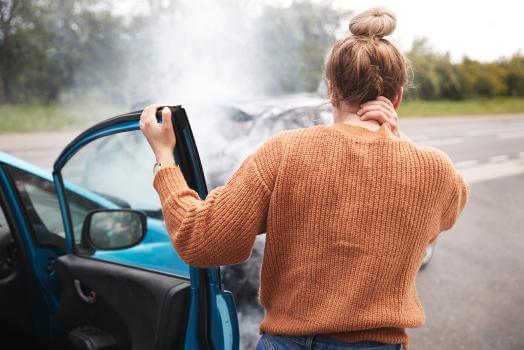
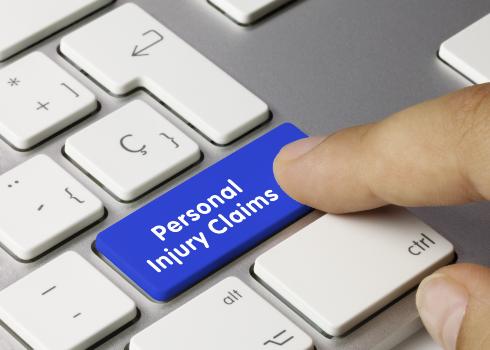
Broken Bones From a Car Accident in Ontario, Canada
Broke Bones & Types of Fractures From Car Accidents in Ontario, Canada
Car accidents can be traumatizing experiences, often resulting in serious injuries, including broken bones. Broken bones, also known as fractures, can vary in severity depending on the type of fracture and the location of the damage.
We will delve into the world of broken bones, exploring the various types of fractures that can occur due to car accidents in Ontario. We will also discuss the steps to take following such injuries and the importance of seeking prompt medical attention.
Types of Fractures from Car Accidents
Regarding car accidents, the type of fracture sustained depends on the nature of the collision and the forces involved.
Here are some of the most common fractures that can result from car accidents in Ontario:
- Comminuted Fractures: These fractures occur when a bone shatters into multiple pieces, often due to a high-impact collision. In severe cases, comminuted fractures may require surgery and extensive rehabilitation.
- Simple (Closed) Fractures: This type of fracture involves a clean bone break without any surrounding skin puncturing. While less severe than other types, simple fractures can still be painful and require proper medical attention.
- Compound (Open) Fractures: A compound fracture involves a broken bone that pierces the skin, often exposing the fractured bone. These injuries are particularly susceptible to infection and typically require immediate medical intervention.
- Greenstick Fractures: More common in children due to their flexible bones, greenstick fractures involve a partial break in the bone. Though less severe, these fractures require prompt medical attention to ensure proper healing.
- Hairline Fractures: Also known as stress fractures, hairline fractures are tiny cracks in the bone often caused by repetitive stress or force. While they may not be immediately apparent, they can cause significant discomfort and worsen without treatment.
What to Do If You Suspect a Fracture
Suppose you suspect you or a loved one has sustained a fracture following a car accident. In that case, it is crucial to seek medical attention immediately. Avoid moving the injured area and keep it as still as possible to prevent further damage. In the case of an open fracture, cover the wound with a clean cloth or bandage to minimize the risk of infection.
Treatment and Recovery
The treatment for fractures varies depending on the severity and location of the injury. In many cases, immobilization using a cast or splint is necessary to promote proper healing. More severe fractures may require surgical intervention, such as inserting pins, screws, or plates. Physical therapy and rehabilitation are often essential components of recovery, helping to regain strength, flexibility, and functionality in the affected area.
Broken bones and fractures from car accidents in Ontario can range from mild to life-altering. Understanding the various types of fractures and their implications is crucial in seeking appropriate medical attention and ensuring the best possible outcome for recovery. If you or a loved one has been involved in a car accident, it is essential to prioritize your health and well-being by seeking prompt and proper care.
However, navigating a car accident’s legal and financial aspects can be overwhelming. Therefore, it is recommended to always contact a lawyer for more information and guidance on your rights and options.


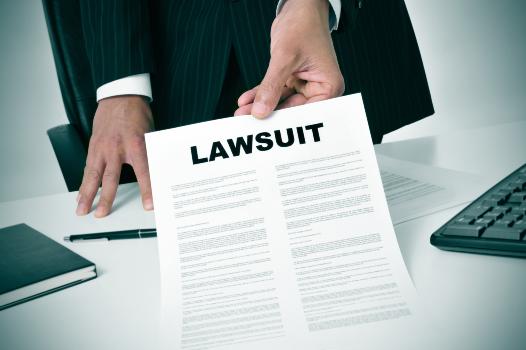
Broken Bones After a Car Accident in Ontario, Canada
Coping with Broken Bones After a Car Accident in Ontario, Canada
Suffering from broken bones after a car accident in Ontario can be a challenging and painful experience. It is essential to take proper care of yourself and follow the right steps to ensure a speedy recovery. Here are some tips to help you cope with broken bones after an Ontario car accident:
Seek Immediate Medical Attention
Do not attempt to self-diagnose or self-treat any injuries. After a car accident, always visit a healthcare professional to assess the extent of your injuries and receive appropriate treatment. In some cases, a broken bone may require surgery or other medical interventions to ensure proper healing.
Follow Your Doctor’s Advice
Your healthcare provider will give you instructions on how to care for your broken bone. This may include taking prescription medications, attending physical therapy sessions, and adhering to any restrictions on movement or weight-bearing activities.
Be sure to follow these recommendations to promote optimal healing and avoid complications.
- Rest and Elevate the Injured Area:
Rest is crucial for the healing process. Avoid putting stress on the injured area, and keep it elevated whenever possible. Elevating the injured area can help reduce swelling and alleviate pain. - Ice the Injury:
Apply ice packs to the injured area to help control swelling and pain. Remember to wrap the ice pack in a towel or cloth to prevent frostbite. Apply ice for 20 minutes, with at least a 30-minute break between applications. - Use Assistive Devices:
Crutches, wheelchairs, or walkers may be necessary to help you maintain mobility while your broken bone heals. These devices can also help prevent further injury and strain on your body. - Attend Physical Therapy:
Physical therapy can help you regain strength, flexibility, and range of motion in the injured area. Work with a licensed physiotherapist to develop a personalized rehabilitation plan targeting your needs. - Stay Positive and Patient:
Healing from a broken bone can be a slow process. Staying patient and maintaining a positive attitude throughout your recovery is essential. Contact friends and family for support. Consider joining a support group or speaking with a counsellor if you’re struggling emotionally. - Explore Legal Options:
Suppose your car accident was caused by another driver’s negligence. In that case, you may be entitled to compensation for your injuries, lost wages, and pain and suffering. Consult with a personal injury lawyer to discuss your legal options and ensure your rights are protected.
Coping with broken bones after an Ontario car accident requires proper medical care, rest, and emotional support. Following your doctor’s advice and taking care of yourself can increase your chances of a full and speedy recovery. Remember, it is essential to consult with a personal injury lawyer to explore your legal options and protect your rights.

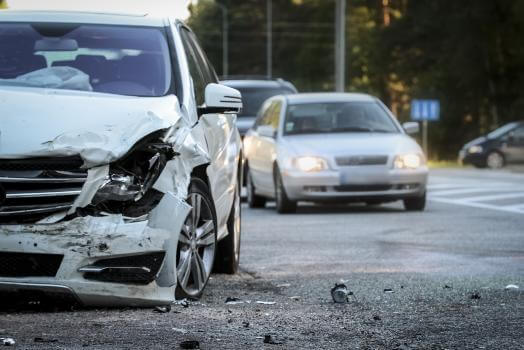

Broken Bones Car Accident Settlement in Ontario, Canada
Average Settlement for Broken Wrists in a Car Accident in Ontario, Canada
Broken bones are a common result of car accidents, and wrist injuries are no exception. The compensation awarded for a fractured wrist in a car accident can vary greatly, depending on several factors. We will discuss the average settlement amounts for broken wrists in car accidents in Ontario, as well as touch on other broken bone injuries and settlements.
Factors Affecting Settlement Amounts
Several factors can influence the settlement amount for a broken wrist or other bone injuries in car accidents, including:
- The severity of the injury: More severe injuries often result in higher settlement amounts.
- Medical expenses: Surgery, rehabilitation, and ongoing medical care costs can impact the settlement.
- Lost wages: If the injury has caused you to miss work, lost income may be factored into the compensation.
- Liability: The degree of fault for the accident may impact the settlement, as Ontario follows a comparative negligence system.
The average settlement amounts for broken bone injuries sustained in car accidents are not fixed. They can vary significantly based on multiple factors, such as the severity of the injury, medical expenses, lost wages, pain and suffering, and liability. However, some general estimates can give you an idea of what to expect regarding compensation for various types of broken bone injuries.
Please note that these figures are only rough estimates, and individual settlements can differ depending on the specific circumstances of each case. The approximate average settlement
amounts for various broken bone injuries sustained in car accidents are:
Broken wrist: $20,000 – $60,000
The settlement amount for a broken wrist can range from $20,000 to $60,000, depending on the severity of the injury, the required medical treatment, and the extent of the impact on the individual’s daily life.
Broken leg: $30,000 – $100,000
Compensation for a broken leg can range from $30,000 to $100,000, depending on factors such as the complexity of the fracture, the need for surgery or ongoing medical care, and any long-term mobility issues or disabilities that result from the injury.
Broken ribs: $15,000 – $50,000
Settlement amounts for broken ribs can vary from $15,000 to $50,000. Factors that can influence the compensation include:
- The number of ribs broken.
- The severity of the injury.
- Any associated internal organ damage.
- The length of the recovery period.
Broken back: $50,000 – $150,000
Compensation for a broken back can range from $50,000 to $150,000. Factors that can impact the settlement include:
- The location and severity of the fracture.
- Any damage to the spinal cord.
- The need for surgery.
- The long-term effects on the individual’s mobility and quality of life.
Broken foot: $20,000 – $60,000
Settlement amounts for a broken foot can range from $20,000 to $60,000, depending on the fracture’s complexity, any required surgeries or medical treatments, and the impact on the individual’s daily life and ability to work.
These average settlement amounts provide a general idea of the potential compensation for various broken bone injuries resulting from car accidents. However, consulting with an experienced personal injury lawyer is essential to obtain a more accurate assessment of your specific case and ensure you receive fair compensation.

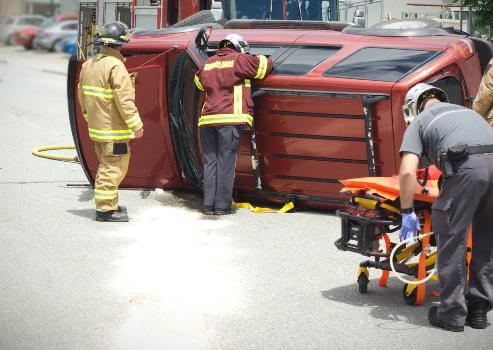

Car Accident Claim Broken Bones in Ontario, Canada
How Do I Make a Claim for Broken Bones in Car Accident in Ontario, Canada
Suppose you have sustained broken bones in a car accident in Ontario. In that case, you may be eligible to claim compensation for your injuries, medical expenses, lost wages, and other damages.
Here are the steps you should take to make a claim after a car accident in Ontario:
- Seek Medical Attention:
Visit a healthcare professional as soon as possible to get a proper assessment of your injuries. Follow their advice and recommended treatment plan. Keep all medical records, bills, and receipts; these documents will be important when filing your claim. - Report the Accident:
Immediately after the accident, call the police and report the incident, especially if there are injuries or significant property damage. Obtain a copy of the police report, which can serve as valuable evidence when filing your claim. - Notify your Insurance Company:
Inform your insurance company of the accident immediately, even if you believe the other party is at fault. Ontario follows a no-fault insurance system, which means you will be dealing with your insurance company for accident benefits, regardless of who is at fault. - Statutory Accident Benefits:
Ontario has a no-fault insurance system, meaning you can claim accident benefits from your insurance company, regardless of who was at fault. These benefits can cover medical and rehabilitation expenses, attendant care, income replacement, and other expenses related to your injuries. - Consider Filing a Tort Claim:
If your injuries exceed the threshold for a tort claim, or if the accident was caused by someone else’s negligence, you may be eligible to file a tort claim against the at-fault party for additional compensation. This claim can cover pain and suffering, economic losses, medical expenses, and other damages not covered by accident benefits. - Gather Evidence:
Collect and preserve any evidence related to the accident, such as photographs of the scene, witness statements, and other relevant documents. This evidence will help support your claim and may be crucial in determining liability and the extent of your damages. - Limitation Periods:
Ontario has a general two-year limitation period to file a lawsuit against the at-fault driver. It is essential to consult a personal injury lawyer to understand your case’s specific timelines and procedures. - File an Accident Benefits Claim:
Submit an accident benefits claim with your insurance company. This claim can help cover medical expenses, rehabilitation costs, lost wages, and other related expenses. Your lawyer can assist you in completing the necessary forms and ensure you meet all deadlines. - Negotiate a Settlement:
Your lawyer can help you negotiate a fair settlement with the insurance company or the at-fault party. They will use their expertise to assess the value of your claim and ensure you receive the appropriate compensation for your injuries and damages. - Litigation (if necessary):
If a settlement cannot be reached, your lawyer may advise you to pursue litigation. This involves filing a lawsuit and potentially going to court to seek the compensation you deserve.
Determining the value of an injury claim in a car accident depends on various factors, including the severity of your injuries, the impact on your life, and the extent of your financial losses. - Consult a Personal Injury Lawyer:
Hiring a personal injury lawyer with experience in car accident cases can help you navigate the complex legal system and ensure you receive the compensation you deserve. They can help you understand your rights, guide you through the process, and ensure you receive fair compensation for your injuries. A lawyer can also handle communications with insurance companies on your behalf, allowing you to focus on your recovery.
*The laws pertaining to automotive injuries are complex and are contsantly evolving. The information on this website was not written by legal professionals and should not be considered legal advise. Please contact a professional personal injury lawyer serving Ontario for the most up to date and accurate information.






